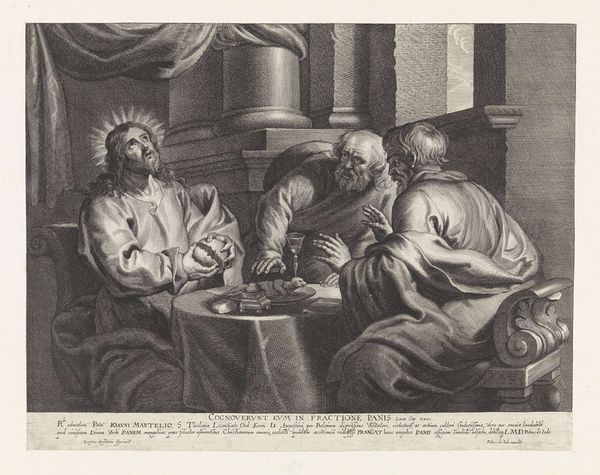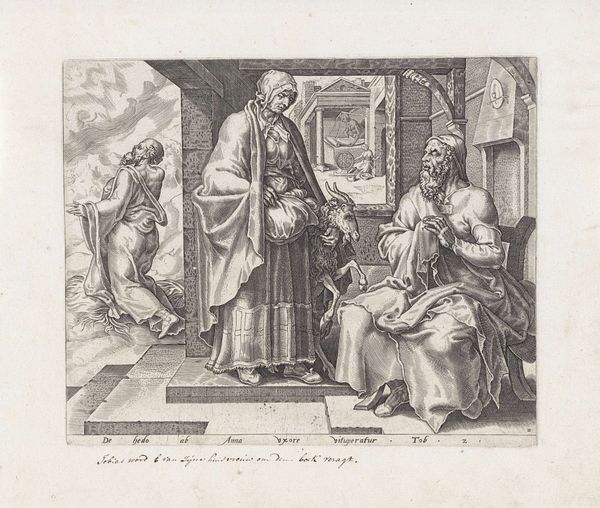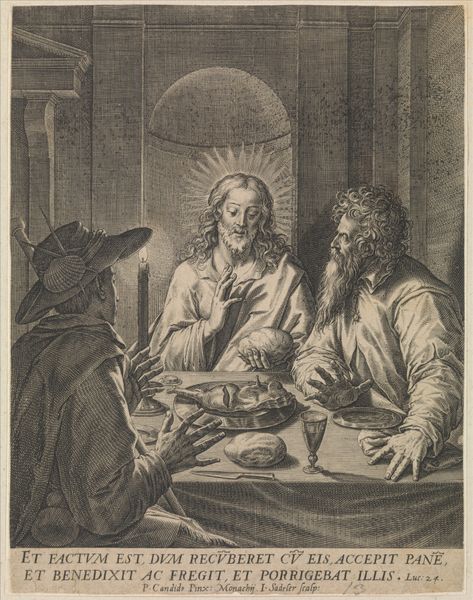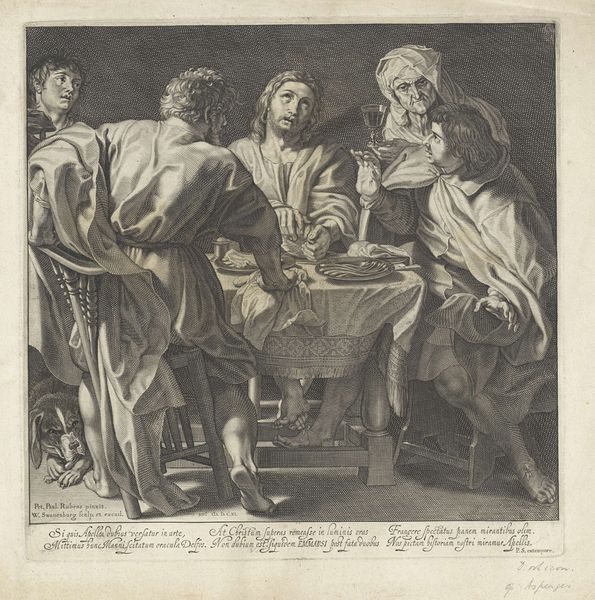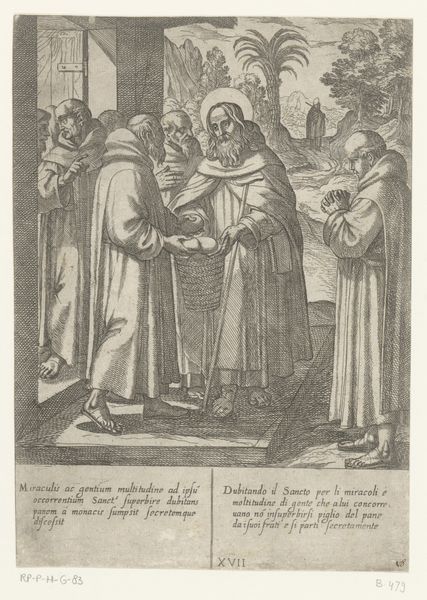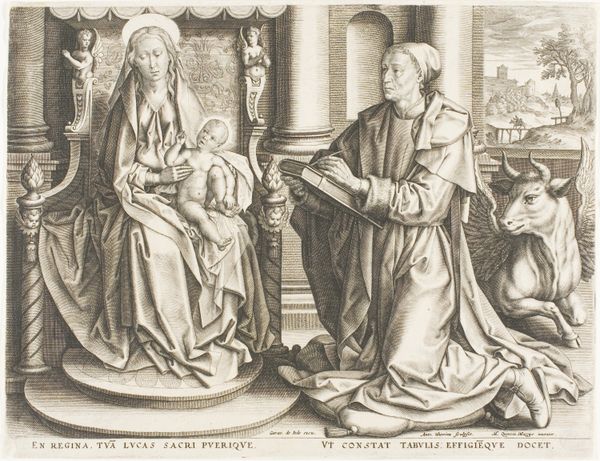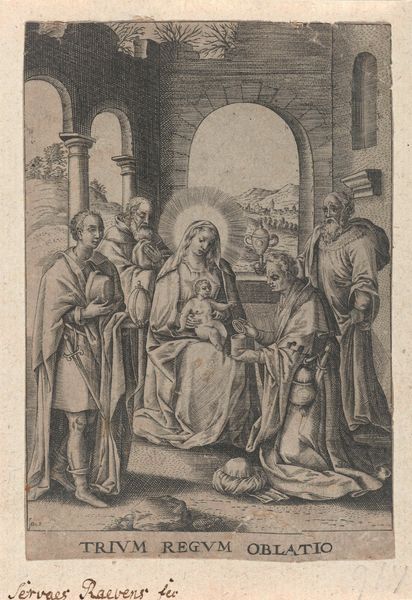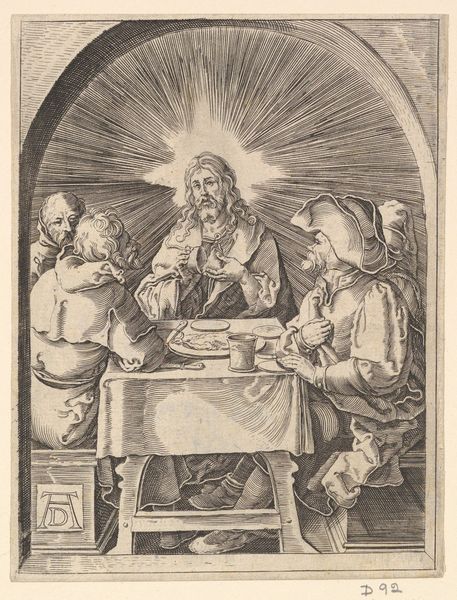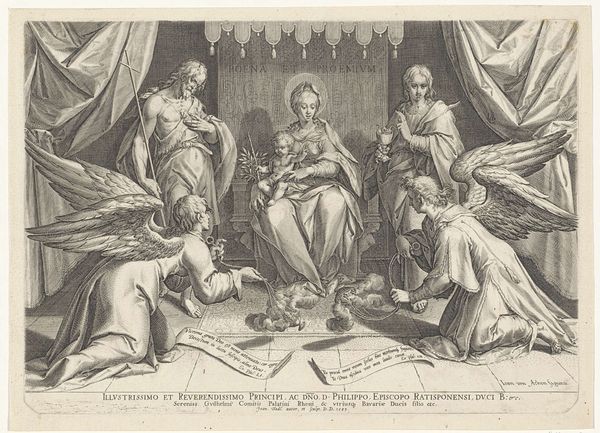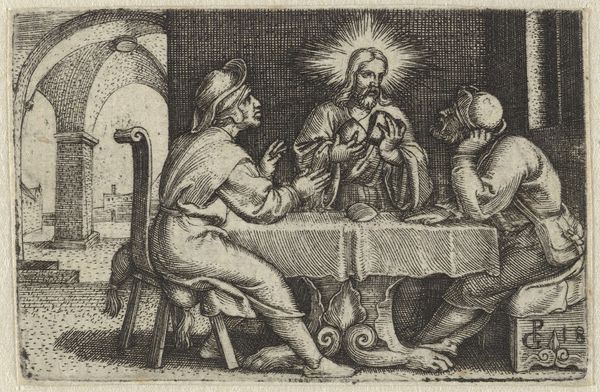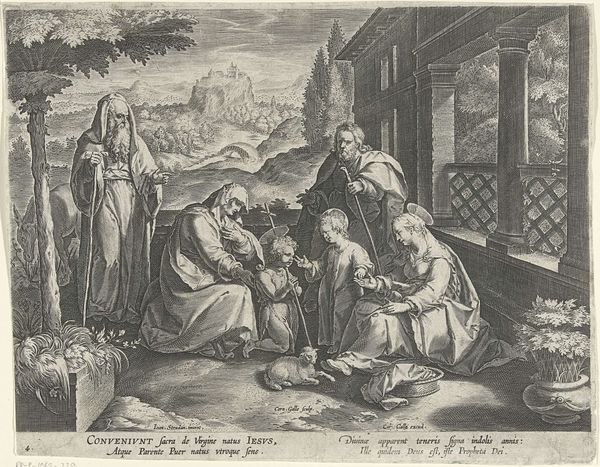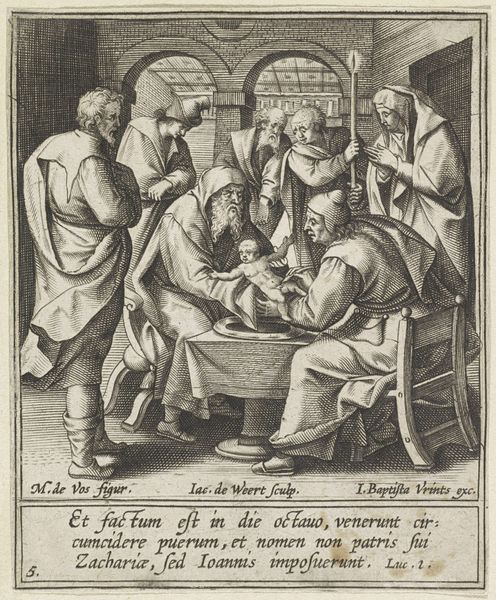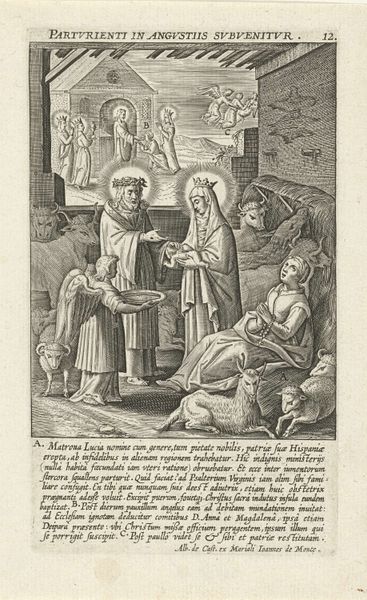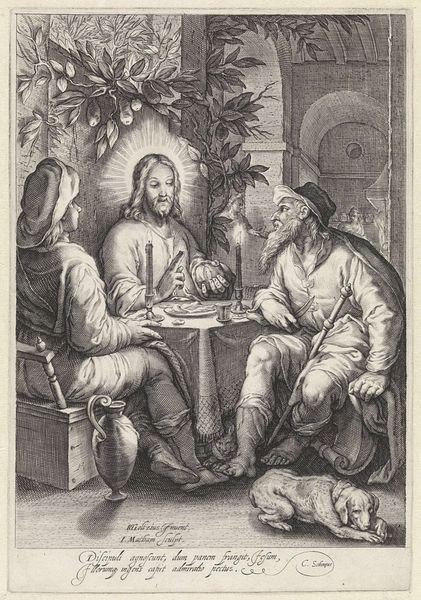
print, engraving
#
baroque
# print
#
figuration
#
history-painting
#
engraving
Dimensions: height 237 mm, width 277 mm
Copyright: Rijks Museum: Open Domain
Curator: Here at the Rijksmuseum, we have "Maaltijd in Emmaüs," or "Supper at Emmaus", an engraving dating to 1614 by Simon van de Passe. Editor: My initial response is how dark yet intimate it feels. The sharp, linear quality creates a sense of quiet observation. Curator: Absolutely. It is important to recognize the broader historical context: The scene depicts the moment when the resurrected Jesus reveals himself to two of his disciples while sharing a meal. In the period of the baroque movement, such engravings were an important tool of communication. Editor: Yes, that tension is clearly visible through formal means. Note how van de Passe masterfully uses light and shadow, look especially at the face of Christ as opposed to the figures at each end, to direct the viewer's gaze and to create that aura of solemnity. Curator: These prints provided accessible imagery for the common person. They reinforced religious doctrine, particularly important during a time of religious reformation and conflict throughout Europe. Notice the table set. It represents far more than just a standard still life but alludes to communion, sacrifice, and renewal. Editor: The artist's engraving technique is remarkable as well. He employs very dense cross-hatching in sections, providing the image with dramatic shading but yet still produces very smooth, and distinct details, which brings about the very somber, sacred tone. Curator: Also note, in the bottom text are inscriptions with Latin verses indicating dedications, which, in the art world then as today, speaks to how essential patronage was. Patrons, motivated by faith and the pursuit of power, shaped the era’s artistic trajectory. Editor: Considering these sharp lines, shading techniques, and linear patterns against the stark and muted color profile is truly amazing when attempting to grasp the sublime effect on viewers of the time period, with the piece essentially being monochromatic by today's standards. Curator: Thinking about it, these prints allow us to better consider the period’s deep relationship between artistic creation, religion, and societal ideologies. Editor: Precisely. Studying details like this gives an opportunity for intense admiration while acknowledging the history.
Comments
No comments
Be the first to comment and join the conversation on the ultimate creative platform.
